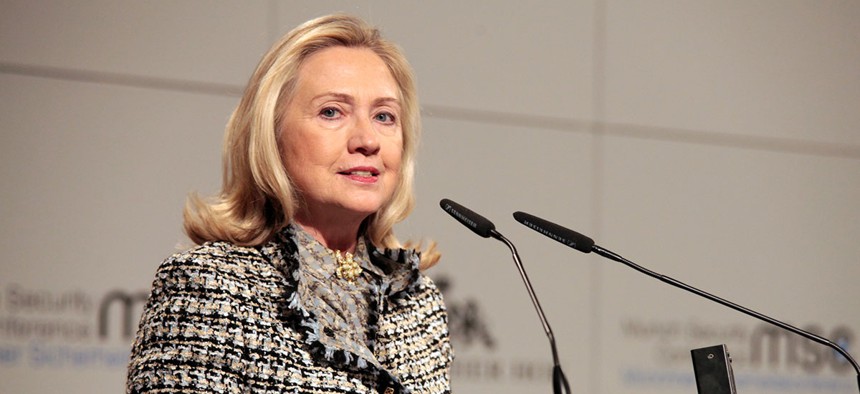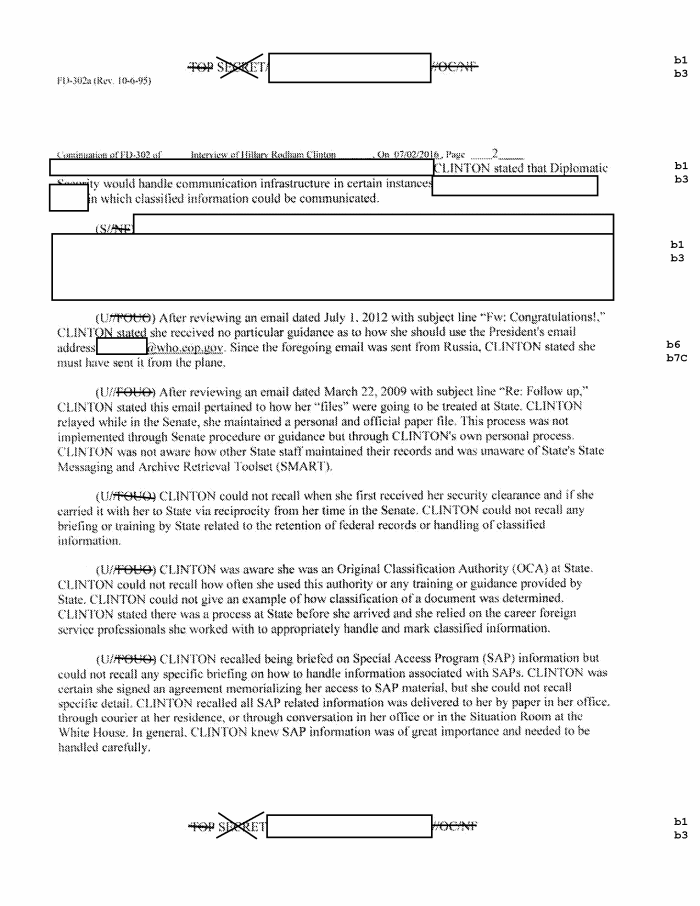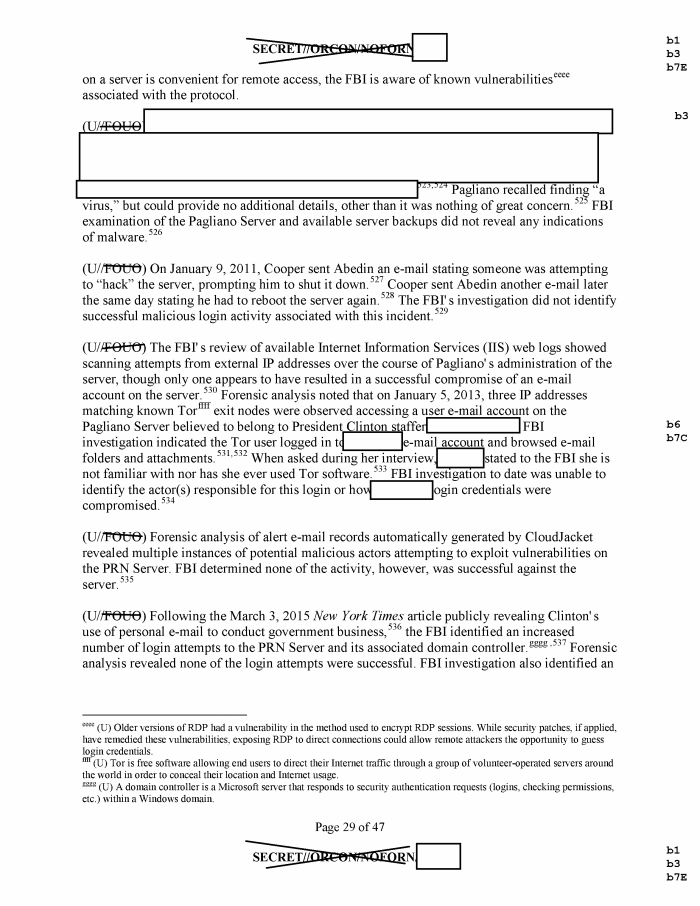
Clinton speaks at the Munich Security Conference in 2012. State Department file photo
A New Report on Clinton's Email
The FBI has released its report into Hillary Clinton’s private email server, providing the most detailed account yet of why and how she used the system.
In a classic Friday news dump, the FBI on Friday afternoon released the results of its investigation into Hillary Clinton’s use of a private email server and private email address. Unsurprisingly, the findings track closely with what FBI Director James Comey said when he announced the findings in July. The report, released in two chunks, offers the most complete narrative of Clinton’s email system. But they do offer a few of what a computer technician quoted in the investigation might refer to as “oh shit” moments.
The original “oh shit” moment concerned an out-of-date server that was housed at a facility in New Jersey. In December 2014, Clinton aide Cheryl Mills asked someone to delete the old messages. Apparently he didn’t do so. Then, in March 2015, The New York Times reported the existence of the email setup. The next day, a House committee on Benghazi requested the preservation of any records. Despite that, an unnamed staffer, realizing he had not followed Mills’s instructions, deleted anyway:
Mills and Clinton said they were unaware of the move.
Unawareness is a common thread throughout the report. Clinton seemed to have only a faint understanding of the process of classification and what was and was not classified, nor was she apparently trained when she joined State from the U.S. Senate:
She also said she was unaware of the requirement that she turn over her emails when she left office, which she said might be due in part to a concussion she suffered in 2012:
Some of the classified messages in Clinton’s emails dealt with “SAP,” special access programs, generally believed to be a reference to drone strikes carried out by the U.S. overseas. Through a peculiarity of classification, these strokes are widely known about and reported on, but the government still treats them as a secret. Some of Clinton’s discussions involved material that had been reported in the public but still was technically classified. On the one hand, that seems pointless, but on the other hand Clinton told FBI investigators she understood the importance of SAP secrecy. In another case, Clinton said staffers were handcuffed by the lack of a protocol for discussing classified information at holidays when people were traveling, meaning aides had to “communicate in code or do the best you could to convey the information.”
Former Secretary of State Colin Powell doesn’t come off well in the report. While Clinton said she had already planned to use a private email address, some advice that he gave her seemed geared to circumventing public-records laws:
Many of Clinton’s aides apparently had no understanding of the fact that Clinton—and in some cases the aides themselves—were using a private email server. Clinton used a remarkable 13 mobile devices to access her email account, including eight separate BlackBerrys during her time as secretary of state. None of the 13 could be located for inspection, her lawyers said. (Clinton apparently often got new BlackBerrys and then decided she liked the old ones better.) She also used five iPads to access her account.
In sum, the report portrays Clinton as generally unaware: unschooled in the rules of classification and not especially concerned about getting trained; but also technologically dependent on aides in the way that many 60-something executives likely are, with little understanding of how the technology they use every day fundamentally works. Reading the report, it’s surprising that more classified information was not accidentally sent than the FBI found.
One important remaining question is whether Clinton’s server and email were ever hacked. When Comey announced the findings he stated, in essence, that they had found no direct evidence; that they would not expect to find such evidence; and that there was good reason to suspect she might have been hacked. The report fleshes that out.
There were numerous failed attempts, which Clinton aide Bryan Pagliano knew about because they appeared as failed login attempts. Pagliano considered but did not implement security protections like a virtual private network or two-step verification. There was an onslaught of attempts after the Times story first publicly revealed the server, once again none of them apparently successful. There were also several cases of what sound like standard phishing and spear-phishing attempts, where Clinton and others received malicious messages with dangerous links.
In one of the more peculiar notes, the FBI reports that an email address belonging to a staffer was compromised by someone using Tor, a software that allows masking and anonymity:
It’s too soon to know what sort of effect the FBI report could have on Clinton’s presidential campaign. It certainly does not paint a flattering view of Clinton, but it also mostly fleshes out information that was widely known about her email system.
The emails represent something of a classic Clinton scandal. Although the House investigation turned up no evidence of wrongdoing on her part with respect to the attacks themselves, it was during that inquiry that her private-email use became public. This is a pattern with the Clinton family, which has been in the public spotlight since Bill Clinton’s first run for office, in 1974: Something that appears potentially scandalous on its face turns out to be innocuous, but an investigation into it reveals different questionable behavior. The canonical case is Whitewater, a failed real-estate investment Bill and Hillary Clinton made in 1978. Although no inquiry ever produced evidence of wrongdoing, investigations ultimately led to President Clinton’s impeachment for perjury and obstruction of justice.
With Hillary Clinton the Democratic nominee for president, every Clinton scandal—from Whitewater to the State Department emails—will be under the microscope. (No other American politicians—even ones as corrupt as Richard Nixon, or as hated by partisans as George W. Bush—have fostered the creation of a permanent multimillion-dollar cottage industry devoted to attacking them.) Keeping track of each controversy, where it came from, and how serious it is, is no small task, so here’s a primer. We’ll update it as new information emerges.











